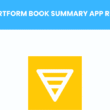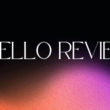Table of Contents Show
Imagine transforming any corner into a beacon of efficiency, where every item is curated to foster your workflow and boost your output. This isn’t just wishful thinking; it’s a practical approach to carving out a workspace that becomes your personal haven for productivity.
From sunrise to sunset, designing a home work schedule can rival the structure of the traditional office. Time management isn’t just about clocking in hours; it’s an art that balances work, rest, and play, cultivating a rhythm that sustains long-term productivity and personal well-being.
Best Work From Home Tips
Here are some of the best work from home tips for better performance.
1. Crafting Your Workspace
Your home office is more than just a corner in your living space; it’s a command center for your professional tasks. Optimize this environment by decluttering and investing in comfortable furniture that supports good posture. Incorporate elements that stimulate productivity, like natural light or green plants, and make sure technology is up to date to prevent frustrating lags.
Setting clear boundaries within this space can signal to others—and to yourself—that when you’re here, it’s time to focus.
2. Design for Efficiency
Efficiency in your home office setup isn’t about grand gestures—it’s about the fine-tuning of your environment to foster deep focus and productivity.
Strategic placement of essential tools reduces movement, saving time that accumulates into hours of increased productivity over weeks.
By creating zones within your workspace for different tasks—a place to brainstorm, a spot for writing, and a nook for calls—your workflow becomes more intuitive, reducing friction and enhancing focus.
Harmonizing your workspace with ergonomic furniture and decluttering regularly can have a transformative effect. Not only does this optimize your physical comfort, but it psychologically primes you for high-efficiency work sessions.
3. Ergonomic Welfare
Ergonomic welfare is foundational to sustained productivity in any work-from-home setup. Proper ergonomics mitigate the risk of strain and injury, allowing for longer, more comfortable work periods.
Investing in quality ergonomic furniture can yield profound dividends in terms of focus and overall well-being. An ergonomic chair and desk setup promotes good posture, which in turn enhances concentration and reduces fatigue.
Moreover, consider the placement of monitors, keyboards, and mice. They should be positioned to encourage a natural, relaxed posture, with monitors at eye level and keyboards at a comfortable height to prevent wrist strain.
Peripheral devices, too, should cater to ergonomic principles. Consider ergonomic keyboards, mouse pads with wrist support, and even footrests for a comprehensive approach to physical welfare.
Remember, taking breaks to stretch and move around is an integral component of ergonomic welfare. It encourages blood circulation and helps maintain energy levels, keeping you sharp and focused throughout the workday.
4. Structuring the Day
Crafting a daily rhythm is akin to composing a symphony. Every movement has its tempo, dynamics, and a clear thematic unity. By dividing your day into distinct blocks of focused work, you preempt distractions and engage in a dance of productivity that becomes second nature. This segmentation ensures you enter into each task fully poised and primed, with a mindset primed for success.
Embrace the power of designated start and end times for your tasks, anchoring them within a “workday schedule.” Introduce buffers for transition between activities, allowing your mind to reset and renew.
This cadence creates a rhythm that sustains momentum and defines boundaries, aiding your focus and fortitude. As the day unfolds, your personal symphony plays out, harmonizing effort with efficiency, and transforming your home into a sanctuary of productivity.
5. Time-Blocking Techniques
Implementing time-blocking techniques revolutionizes the way you approach work-from-home tasks.
- Set Clear Priorities: Assign your most critical tasks to periods where you have the highest energy and fewest interruptions.
- Allocate Specific Time Slots: Dedicate fixed blocks of time for meetings, deep work, and administrative chores.
- Include Buffer Periods: Build in short breaks between tasks to refresh and recalibrate.
- Limit Task Length: Set maximum time limits for each task to reduce procrastination and enhance decision-making speed.
- Review and Adjust: At day’s end, review your accomplishments and fine-tune your time blocks for the next day.
Mastering this technique requires patience and continuous refinement.
Over time, time-blocking becomes an invaluable compass, guiding your daily journey toward peak productivity and focus.
6. Importance of Breaks
Short pauses during work are not a luxury; they are a necessity for maintaining mental acuity. Regular breaks prevent burnout and sustain concentration.
Breaks serve as mental pit stops, where cognitive resources are replenished. This refreshment is essential for sustained innovation, decision-making, and engagement with work.
In a remote working environment, the absence of natural interruptions necessitates deliberate break scheduling. This ensures you step away from the screen, aiding in eye health and mental restoration.
Strategically timed breaks boost overall productivity by preventing fatigue. Incorporating methods like the Pomodoro Technique, which advocates for a 5-minute break every 25 minutes, can enhance focus and stamina.
Embrace the power of pauses. Making time for breaks is integral to achieving a harmonious work-from-home life balance.
7. Minimizing Distractions
To forge an environment conducive to deep work, it’s imperative to curtail potential distractions with intentionality and resolve. This often means silencing notifications, adopting noise-cancellation technology, or designating a dedicated workspace set apart from the household hubbub.
Effective remote work hinges on the mastery of minimizing interruptions. By clearly communicating your focus hours to family and setting firm boundaries, you create the tranquil oasis necessary for productivity to flourish.
8. Digital Clutter Clean-up
In the digital realm, tidiness is synonymous with clarity. Just like a cluttered desk, a cluttered computer can substantially dampen your focus, sapping your productivity and creativity in the process.
Establish a habit of regular digital decluttering. Streamline your digital life for increased clarity and reduced cognitive load.
Start with your email inbox. Implement filters, unsubscribe from needless newsletters, and embrace the zero-inbox philosophy. This approach reduces mental clutter, allowing for a clearer vision of your day’s priorities.
Move on to your desktop and document folders. Organize files into specific categories and dispose of old or redundant items. Regularly cleaning out these spaces not only clarifies your work environment but also saves valuable time that would otherwise be spent searching for information. Think of it as creating a freshly paved road for your workflow to accelerate unhindered.
9. Boundaries with Housemates
Working from home necessitates clear boundaries, especially with those you share your space with.
- Communicate Your Schedule: Ensure everyone knows your work hours and important meeting times.
- Establish Quiet Hours: Set periods during the day when noise is kept to a minimum.
- Create a Dedicated Workspace: Make a physical area that is only for work, signaling others not to disturb.
- Share a Visual Indicator: Use a sign or signal that shows you are in ‘do not disturb’ mode.
- Set Rules for Shared Spaces: If your workspace is in a common area, determine when and how it can be used by others.
- Have Regular Check-Ins: Schedule time to discuss how the arrangement is working and make adjustments if needed.
These strategies will help maintain harmony and efficiency at home.
Maintaining these boundaries takes persistence but creates a professional and productive atmosphere.
10. Wellness and Concentration
Your mental state profoundly influences your ability to focus while working from home. Cultivating a routine of mindfulness practices, such as meditation or deep-breathing exercises, can significantly enhance your concentration abilities. Also, integrating short, regular breaks into your schedule, leveraging techniques like the Pomodoro method, allows your mind to rest and recharge, leading to sustained productivity throughout your workday.
A healthy lifestyle is undeniably linked to improved focus and cognitive performance. Prioritize sleep, maintain a balanced diet rich in nutrients that aid cognitive functions, and ensure you engage in physical activity to stimulate blood flow and oxygen to your brain. Embrace these wellness habits, and watch as your work-from-home productivity flourishes.
11. Mindfulness Practices
Embedding mindfulness into your daily routine can revolutionize your work-from-home productivity.
- Meditation: Start with a simple five-minute session to clear your mind.
- Deep Breathing: Use the 4-7-8 technique to instill calmness and focus.
- Yoga: Incorporate brief yoga poses to connect body and mind.
- Gratitude Journaling: Note three things you’re grateful for each day to foster positivity.
- Mindful Walking: Take short walks, fully aware of your surroundings.
- Guided Imagery: Visualize success and calmness with audio guides.
- Progressive Muscle Relaxation: Release tension from your body systematically.
Channeling your inner zen isn’t just for health gurus – it’s a strategic move for peak performance.
Incorporating these practices can lead to a more serene, centered approach to your daily tasks.
12. Physical Activity Benefits
Regular physical activity enhances focus and productivity, directly impacting your work-from-home effectiveness. Engaging in exercise boosts blood flow, which in turn nourishes your brain with oxygen and essential nutrients. This biological response primes your mental acuity, enabling a sharper and more persistent concentration on work tasks.
Even short bouts of exercise can yield immediate cognitive benefits, such as enhanced creativity and problem-solving skills. A quick, energetic walk or a session of stretching can act as a reset button, clearing mental fog and reenergizing your thought processes.
Moreover, consistent physical activity helps maintain your energy levels throughout the day, combating the afternoon slump that commonly plagues remote workers. Endorphins released during exercise (often referred to as runner’s high) can elevate mood and reduce stress, creating a more positive and resilient mindset.
Physical activity offers not only a cognitive performance lift but also mitigates the risks associated with sedentary behavior. By integrating movement into your day, you’re fortifying your body against chronic conditions, ensuring your long-term health and your ability to maintain a high level of professional productivity.
Given that remote work can lead to extended periods of sitting, it’s imperative to counterbalance these static phases with mobility. Physical exercise serves as a powerful antidote to the strains of inactivity, promoting both physical well-being and the psychological readiness needed to tackle complex tasks and challenges.
Ultimately, the ripple effect of physical activity impacts one’s entire work-from-home experience. Regular exercise fosters discipline and time management—key qualities that translate directly into work performance. When you care for your body, you’re also nurturing your career capabilities.
Conclusion:
Mastering the art of working from home with focus is essential for maintaining productivity and achieving a healthy work-life balance. The twelve focus tips outlined in this guide provide a comprehensive toolkit to navigate the unique challenges of remote. Let us know in the comments below what is your favorite hack to work from home without any distractions.
Related articles:










